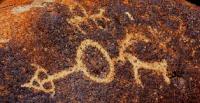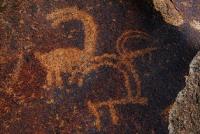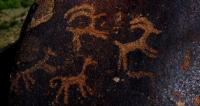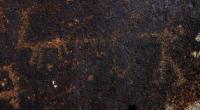Вы здесь
Rock Art Sites in Kazakhstan.






Walking tour to Petroglyphs in Kazakhstan.
“Does progress mean that we dissolve our ancient myths? If we forget our legends, I fear that we shall close an important door to the imagination”
James Christensen.
Culture tour of Tamgaly Petroglyphs.
Introduction Kazakhstan is the largest country in Central Asia. The vast steppes, deserts and semi-desert areas of the country’s central part are bounded to the west by the Caspian Sea and the Urals, to the north by the forest-steppes of Western Siberia, to the east and south by the mountain belt of the Altai, Tarbagatai, Dzhungarian Alatau and the high ranges of the Northern Tien Shan.
Geographical locations, natural resource wealth, diversity of landscapes and climatic conditions, both in the present and in ancient times, determined the special significance of Kazakhstan in the history of the many peoples of Eurasia.
Historically and culturally this vast mountain-steppe country has since ancient times played the role of a contact zone, linking civilizations and peoples of the Near East and East Asia, Siberia and Eastern Europe.
Rock art sites, along with other historical evidence -written and archaeological- provide rich material for understanding the many processes of cultural development and interaction of peoples of Kazakhstan and neighboring countries in ancient and medieval times.
Despite the fact that rock carvings are found today in practically all regions of the country, there are clearly several major zones of concentration of rock art sites: the eastern (Altai, Irtysh and Tarbagatai), central (SaryArka, Ulytau and northern Balkhash region), south, divided into South Kazakhstan (Tau, Talas and Kyrgyz Alatau) and the Semirechensk part (Dzhungarian Tau, Northern Tien-Shan, Chu-Ili mountains). From the perspective of history and geography, the eastern and southern zones have a wider range than is shown by the current political map of the region.
Thus, the Kazakhstan Altai sites are inseparable from the Altai-Sayan area of rock art, and the sites of the western edge of the Talas Range and Karatau from those in all of the West Tien Shan region. In western Kazakhstan, rock art sites are relatively few and occur mainly on the Mangyshlak peninsula and Ustyurt plateau with single locations in the Mugodzhary mountains.
In northern Kazakhstan rock carvings are not known. Traditionally, Kazakhstan archaeologists divide the petroglyph locations into large, with more than 1000 individual images, and small sites consisting of tens to hundreds of petroglyphs.
This classification does not reflect the differences of a cluster of figures from others, but rock art typology in the region has not yet been developed, and we can only use simple statistical calculations and comparisons.
Most large and significant locations of petroglyphs are concentrated in the east (Altai, Tarbagatai) and especially in South Kazakhstan (Dzhungarian Alatau, Chu-Ili mountains and Syr Darya Kara-Tau). The sites in these areas are the most studied.
Two of them – Arpauzen and Eshkiolme- are potential sites for the World Heritage List and are presented in the Tentative List of Kazakhstan for UNESCO. The Tamgaly petroglyphs were included in the World Heritage List in 2004.
Authority:
“Rock Art Sites in Kazakhstan”. Alexey E. Rogozhinskiy.
Photos by
Alexander Petrov.







